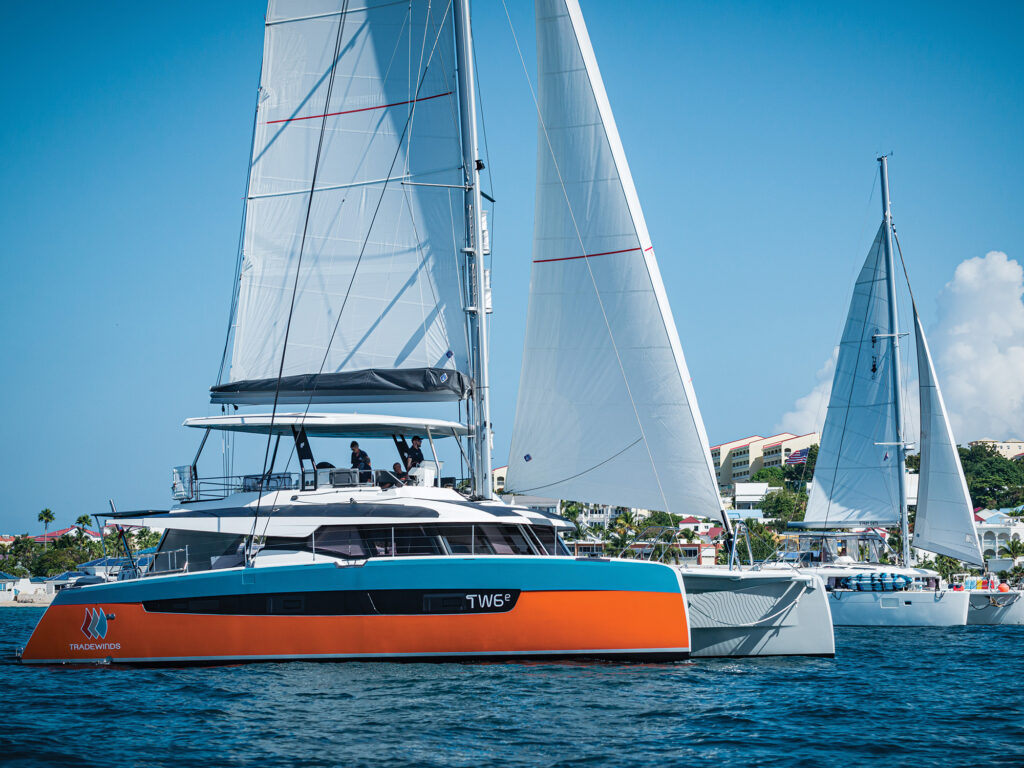
With its unmistakable aqua-and-orange color scheme emanating from twin hulls, the Fountaine Pajot Samana 59 Aurora was easy to spot in the pack of competing rallyists at the 2024 Caribbean Multihull Challenge out of St. Maarten in February. Yet while the first-time participant managed to steer clear of any winners’ circles (sorry, Team Aurora), it certainly found itself a standout in perhaps the most important category of all: eco-conscious cruising.
TradeWinds, whose experiences blend the best of the cruising life with protecting and preserving the environment, used this year’s CMC Rally as a shakedown cruise for the much-anticipated 59-foot TWe6 Smart Electric Yacht from Fountaine Pajot. The boat’s power generation comes from hydro, solar and wind. Designed and built in partnership with EODev, a specialist in industrial solutions using hydrogen, the Fountaine Pajot 59 Aurora is the world’s first production cruising catamaran with 100 percent electric propulsion that uses hydrogen as an energy source. This prototype, a Samana 59 Smart Electric X REXH2, is named after the electro-hydrogen generator that it carries.
The system is based on three operating modes. The first mode is fully electric. A battery of 60 kWh, powered by solar panels and hydraulic energy similar to that on board the Aura 51 Smart Electric, allows the boat to be autonomous at anchor and during several hours when sailing.
The second mode integrates green hydrogen as a source of energy storage, allowing for hybrid electro-hydrogen operation. Hydrogen, under pressure, feeds a 70 kW fuel cell that supplies electricity to the electric motors. EODev says that this fuel-cell technology, in addition to addressing decarbonization, allows for an increased life span of the system equivalent to three times that of traditional diesel equipment. In use, the operation is similar to a hydrogen hybrid car, with recharging possibility at port via hydrogen terminals. This mode, coupled with solar panels and hydrogen generation, provides autonomy at anchor for several weeks, and five hours of motor navigation at a speed of 7 knots.
The third mode is diesel hybrid. A small backup generator will take over during situations that require prolonged use of the engines, with no possibility of recharging with hydrogen.
In standard use, with a laden displacement slightly more than the standard FP59 catamaran’s, Aurora is expected to be self-sufficient, with zero emissions for up to a week. There’s one caveat: access to hydrogen recharging. For the time being, no infrastructure exists in ports.
However, TradeWinds and Dream Yacht Worldwide have ordered 10 Fountaine Pajot electric catamarans—so the future will in some way need to include marina recharging stations. Watch this space for more information.








